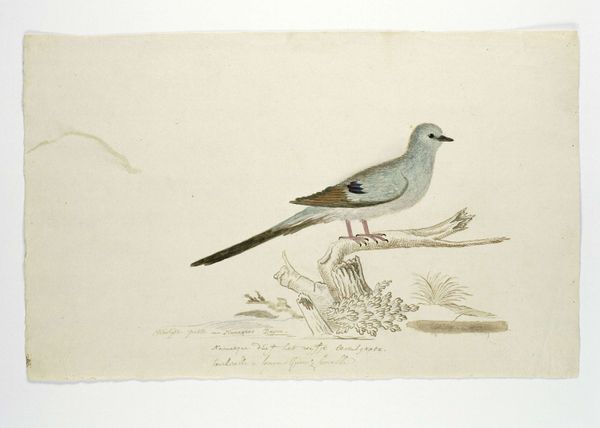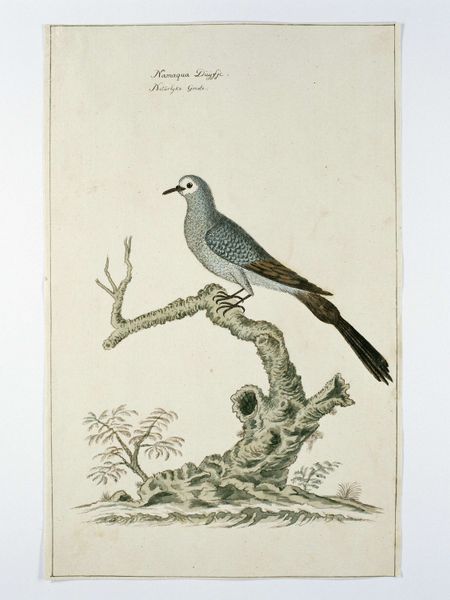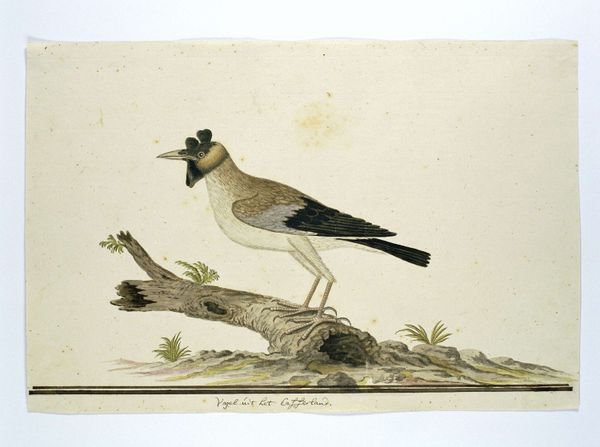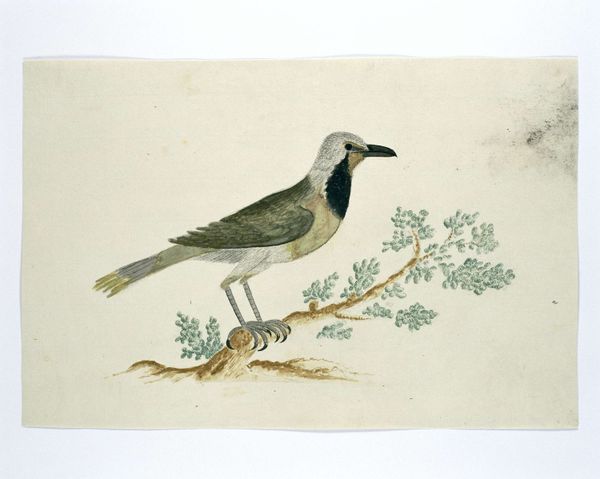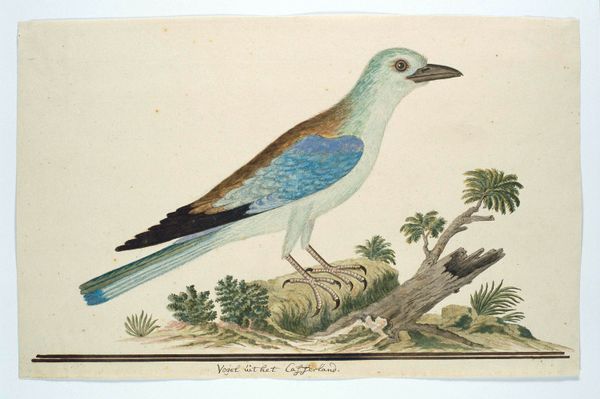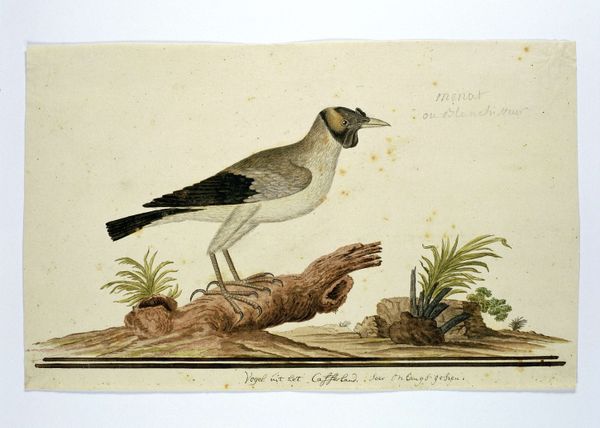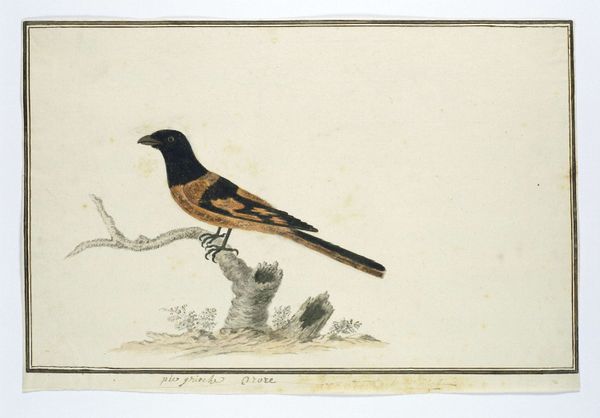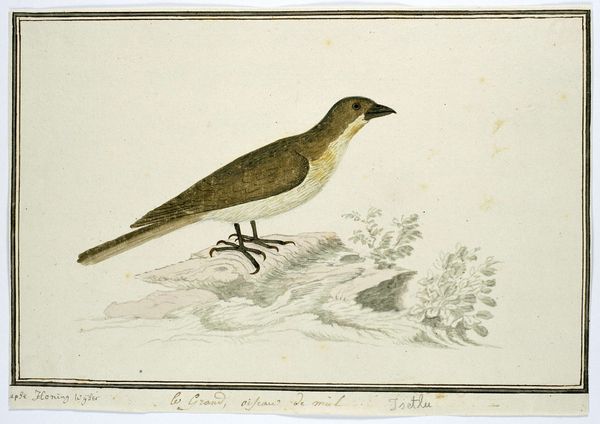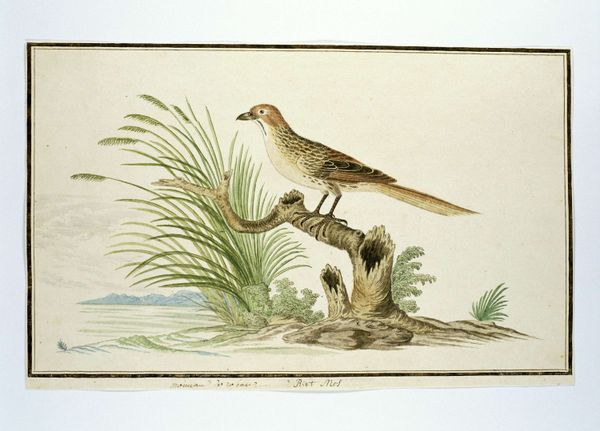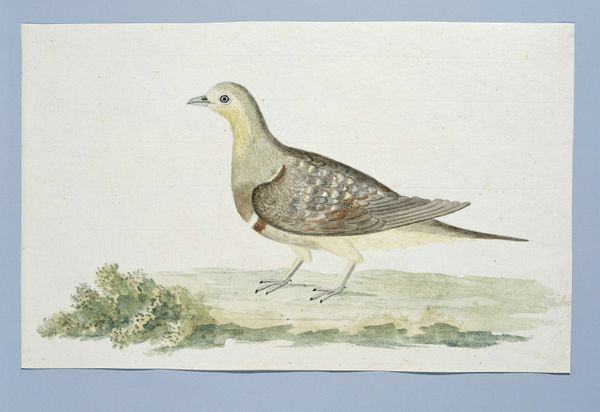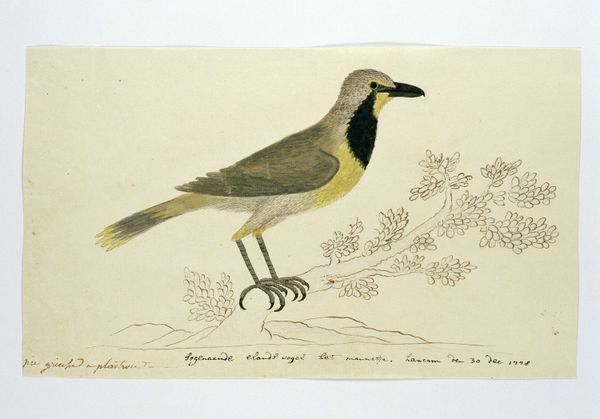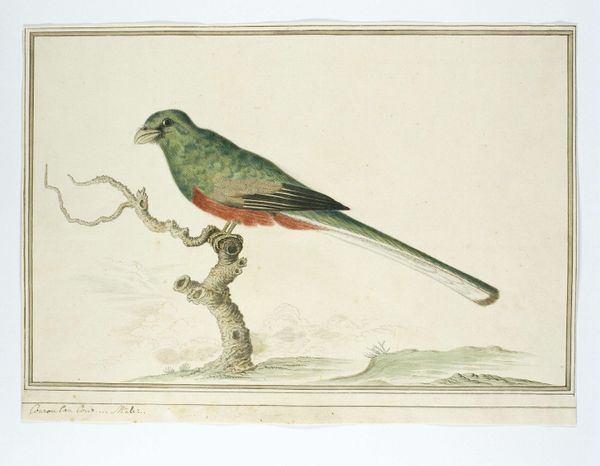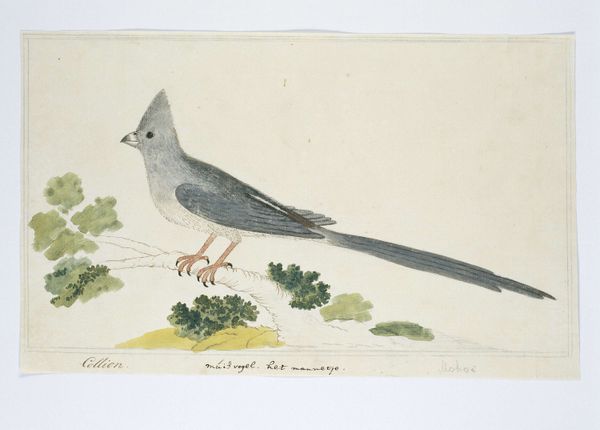
Dimensions: height 660 mm, width 480 mm, height 269 mm, width 430 mm, height mm, width mm
Copyright: Rijks Museum: Open Domain
Editor: So, here we have Robert Jacob Gordon’s "Oena capensis (Namaqua dove)," likely from 1778. It’s a watercolor and drawing, and it has this delicate, almost wistful quality to it. I’m immediately drawn to the bird's poised stance. What stands out to you? Curator: I’m fascinated by how the artist captures the dove. Birds, in general, possess profound symbolism across cultures, don’t they? This Namaqua dove, specifically, in its cultural context, carries significant emotional and psychological weight. Editor: How so? What makes it so meaningful? Curator: Consider the dove’s association with peace, innocence, and even the soul’s journey in some belief systems. Gordon places it deliberately in this seemingly tranquil scene; do you think there might be a counter-narrative hidden within this serenity? Editor: Possibly, that contrast could reveal a lot, although it could also be a straightforward depiction of natural beauty, no? Curator: Perhaps. Yet, look at how deliberately Gordon renders each feather, how precisely the colours blend. Do those details create an iconic form with the artistic emphasis on symbolic meaning, rather than a purely objective study? Is there more than observation at play? Editor: That’s an interesting point. I hadn’t considered that, actually. It makes me think about the history of ornithological illustrations— were they always just about scientific accuracy? Curator: They weren't, and it is an example of how our understanding changes over time, adding emotional layers and historical perspective. I like how your observations helped to deepen my reflections on symbols and memory too.
Comments
No comments
Be the first to comment and join the conversation on the ultimate creative platform.
